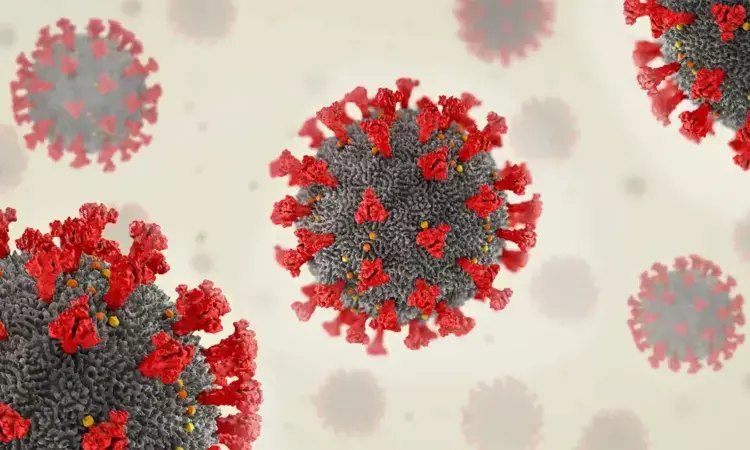- Home
- Medical news & Guidelines
- Anesthesiology
- Cardiology and CTVS
- Critical Care
- Dentistry
- Dermatology
- Diabetes and Endocrinology
- ENT
- Gastroenterology
- Medicine
- Nephrology
- Neurology
- Obstretics-Gynaecology
- Oncology
- Ophthalmology
- Orthopaedics
- Pediatrics-Neonatology
- Psychiatry
- Pulmonology
- Radiology
- Surgery
- Urology
- Laboratory Medicine
- Diet
- Nursing
- Paramedical
- Physiotherapy
- Health news
- Fact Check
- Bone Health Fact Check
- Brain Health Fact Check
- Cancer Related Fact Check
- Child Care Fact Check
- Dental and oral health fact check
- Diabetes and metabolic health fact check
- Diet and Nutrition Fact Check
- Eye and ENT Care Fact Check
- Fitness fact check
- Gut health fact check
- Heart health fact check
- Kidney health fact check
- Medical education fact check
- Men's health fact check
- Respiratory fact check
- Skin and hair care fact check
- Vaccine and Immunization fact check
- Women's health fact check
- AYUSH
- State News
- Andaman and Nicobar Islands
- Andhra Pradesh
- Arunachal Pradesh
- Assam
- Bihar
- Chandigarh
- Chattisgarh
- Dadra and Nagar Haveli
- Daman and Diu
- Delhi
- Goa
- Gujarat
- Haryana
- Himachal Pradesh
- Jammu & Kashmir
- Jharkhand
- Karnataka
- Kerala
- Ladakh
- Lakshadweep
- Madhya Pradesh
- Maharashtra
- Manipur
- Meghalaya
- Mizoram
- Nagaland
- Odisha
- Puducherry
- Punjab
- Rajasthan
- Sikkim
- Tamil Nadu
- Telangana
- Tripura
- Uttar Pradesh
- Uttrakhand
- West Bengal
- Medical Education
- Industry
COVID-19 infection causes teen's vocal cord paralysis in first-of-its-kind case

COVID-19 Case at SMCH Raises Concerns
Physician-researchers from Mass Eye and Ear, a member of Mass General Brigham, report the first pediatric case of bilateral vocal cord paralysis after COVID-19 (SARS-CoV-2) infection. The patient, an otherwise healthy 15-year-old female, came to the emergency department at Massachusetts General Hospital with symptoms of respiratory distress nine days after diagnosis with SARS-CoV-2 infection. Examination with an endoscope revealed bilateral vocal cord paralysis, which is an immobility of both vocal cords found in the larynx or voice box. The researchers concluded that this paralysis was likely a downstream effect of the COVID-19 virus when an extensive workup revealed no other cause.
The case, which is presented December 19th in the journal Pediatrics, suggests that vocal cord paralysis may be a nervous system-related (neuropathic) complication of the virus, in addition to already well-established neurologic complications in children and adults.
“Given how common this virus is among children, this newly recognized potential complication should be considered in any child presenting with a breathing, talking or swallowing complaint after a recent COVID-19 diagnosis,” says first author Danielle Reny Larrow, M.D., a resident in the Department of Otolaryngology-Head and Neck Surgery at Mass Eye and Ear. “This is especially important as such complaints could be easily attributed to more common diagnoses such as asthma.”
While at the hospital, the patient underwent a detailed battery of diagnostic tests from Mass General Brigham clinicians including blood work, imaging, cerebrospinal fluid analysis and consultations with otolaryngology, neurology, psychiatry, speech language pathology and neurosurgery.
When speech therapy failed to relieve the patient’s symptoms, the physicians performed a tracheostomy-a surgically created opening in the windpipe – to relieve the patient’s breathing difficulties. She remained tracheostomy-dependent for more than 13 months after initial treatment, suggesting that this type of nerve complication may not be temporary.
Following the submission of this case report, the physicians were able to remove the tracheostomy-15 months after it was inserted and just in time for the patient’s high school graduation and prom.
“She was having her senior prom a year and a quarter to the date of when she lost her function, and she told me she was not going to go to the prom with her tracheostomy in place,” says Hartnick. “We decided to intervene so that she could graduate high school and go to her prom tracheostomy-free, which she did.”
Post-viral neuropathy is a known cause of vocal cord paralysis, and there have been several reports of paralysis in one or both vocal cords of adults as a complication of SARS-CoV-2 infection, but this is the first report of the complication in an adolescent. This is important, the authors say, because these types of complications are not usually expected in young, healthy individuals and there have been more than 15 million reported cases of pediatric SARS-CoV-2 infection.
“To have a young, healthy, vibrant high schooler all of a sudden lose one of their important cranial nerves such that they can't breathe is highly unusual and took some parsing,” says senior author Christopher Hartnick, M.D., director of the Division of Pediatric Otolaryngology and Pediatric Airway, Voice, and Swallowing Center at Mass Eye and Ear. “The fact that kids can actually have long term neurotrophic effects from COVID-19 is something that it's important for the broader pediatric community to be aware of in order to be able to treat our kids well.”
Reference:
Larrow DR, Hartnick C. Bilateral Vocal Cord Paralysis Requiring Long-term Tracheostomy After SARS-CoV-2 Infection. Pediatrics. 2023 Dec 19:e2023061897. doi: 10.1542/peds.2023-061897.
Dr Kamal Kant Kohli-MBBS, DTCD- a chest specialist with more than 30 years of practice and a flair for writing clinical articles, Dr Kamal Kant Kohli joined Medical Dialogues as a Chief Editor of Medical News. Besides writing articles, as an editor, he proofreads and verifies all the medical content published on Medical Dialogues including those coming from journals, studies,medical conferences,guidelines etc. Email: drkohli@medicaldialogues.in. Contact no. 011-43720751


